7 Mistakes You're Making with LED Aquarium Lighting (and How to Fix Them)
7 Mistakes You're Making with LED Aquarium Lighting (and How to Fix Them)
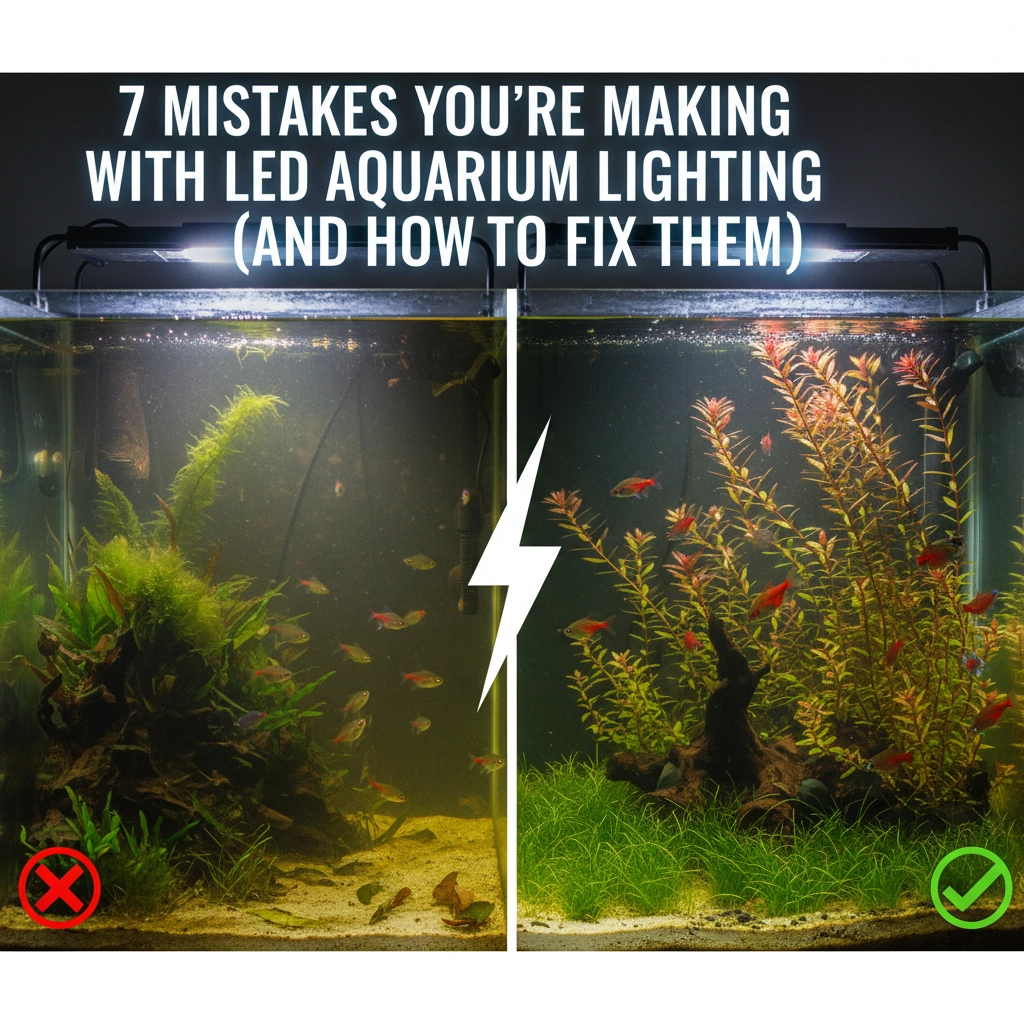
Whether you're a seasoned aquarist or just dipping your toes into the mesmerizing world of underwater ecosystems, LED lighting can make or break your aquatic masterpiece. These energy-efficient powerhouses offer incredible control and customization, but many hobbyists unknowingly sabotage their thriving aquatic communities with common lighting blunders.
Don't worry: we've all been there! Your journey to creating that dazzling, vibrant aquarium doesn't have to include these frustrating detours. Let's dive into the depths of the most common LED lighting mistakes and discover how to transform your underwater oasis into the captivating aquatic paradise you've always envisioned.
Mistake #1: Running Your Lights Around the Clock
The Problem That's Drowning Your Plants
One of the most destructive mistakes you can make is leaving your LED lights blazing 24/7. You might think you're giving your plants and corals extra love, but you're actually overwhelming them! Just like us, aquatic life needs downtime to rest, recover, and maintain healthy biological rhythms. Without this crucial dark period, your plants become stressed, growth stagnates, and you'll watch your beautiful greenery slowly deteriorate.
Your Fix for Success
Establish a consistent lighting schedule that mimics natural day-night cycles. For planted tanks, aim for 8-12 hours of illumination daily. Invest in an inexpensive timer: it's a game-changer that removes human error from the equation. Your plants will thank you with lush, vibrant growth once they can properly photosynthesize and rest in alternating cycles.
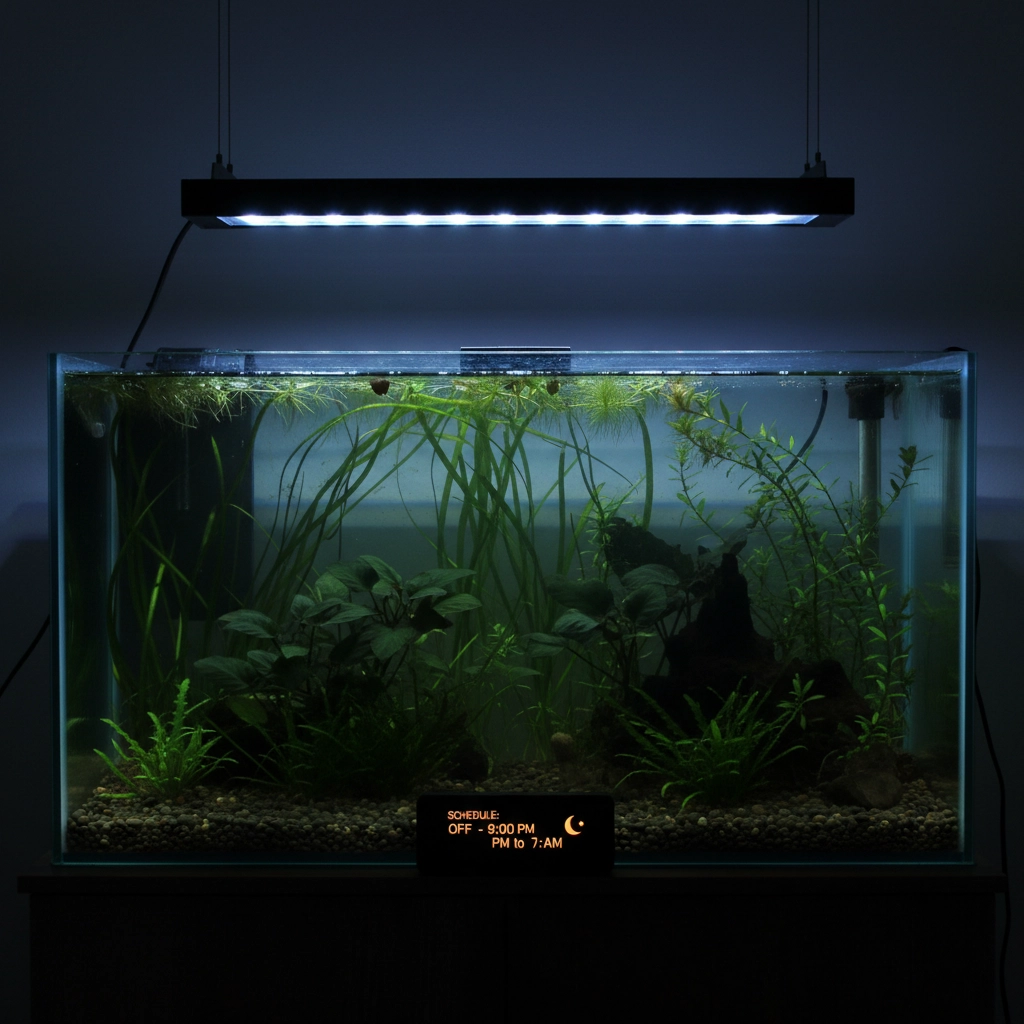
Mistake #2: Swimming in the Wrong Light Spectrum
The Spectrum Struggle
Not all LED lights are created equal, and using the wrong spectrum is like trying to grow tomatoes under a desk lamp. Your exotic plants and dazzling corals have specific light requirements that generic "aquarium LEDs" simply can't meet. Cool white lighting might look nice to your eyes, but it lacks the red and blue wavelengths your plants desperately crave for optimal photosynthesis and growth.
Spectrum Solutions That Work
Research your specific inhabitants and choose LEDs with appropriate spectral output. For planted tanks, prioritize lights offering both red and blue wavelengths or natural warm white options. Reef enthusiasts should focus on fixtures providing the right spectral distribution for coral health and vibrant coloration. Modern LED manufacturers now offer preset modes designed for specific tank types: take advantage of this technology to simplify your setup process.
Mistake #3: Creating Chaos with Inconsistent Schedules
The Schedule Sabotage
Even with perfect duration, irregular lighting schedules stress your aquatic community by preventing them from establishing natural routines. When your plants can't predict when light will arrive, they waste precious energy on adaptation rather than growth. This inconsistency creates a perpetual state of confusion that stunts development and weakens your entire ecosystem.
Consistency is Your Key to Success
Automation is your best friend here! Set up that timer and stick to the same schedule every single day. Your plants and corals will establish healthy circadian rhythms, directing their energy toward magnificent growth instead of constantly adjusting to unpredictable conditions. Consistency transforms stressed aquatic life into thriving, dynamic displays of natural beauty.
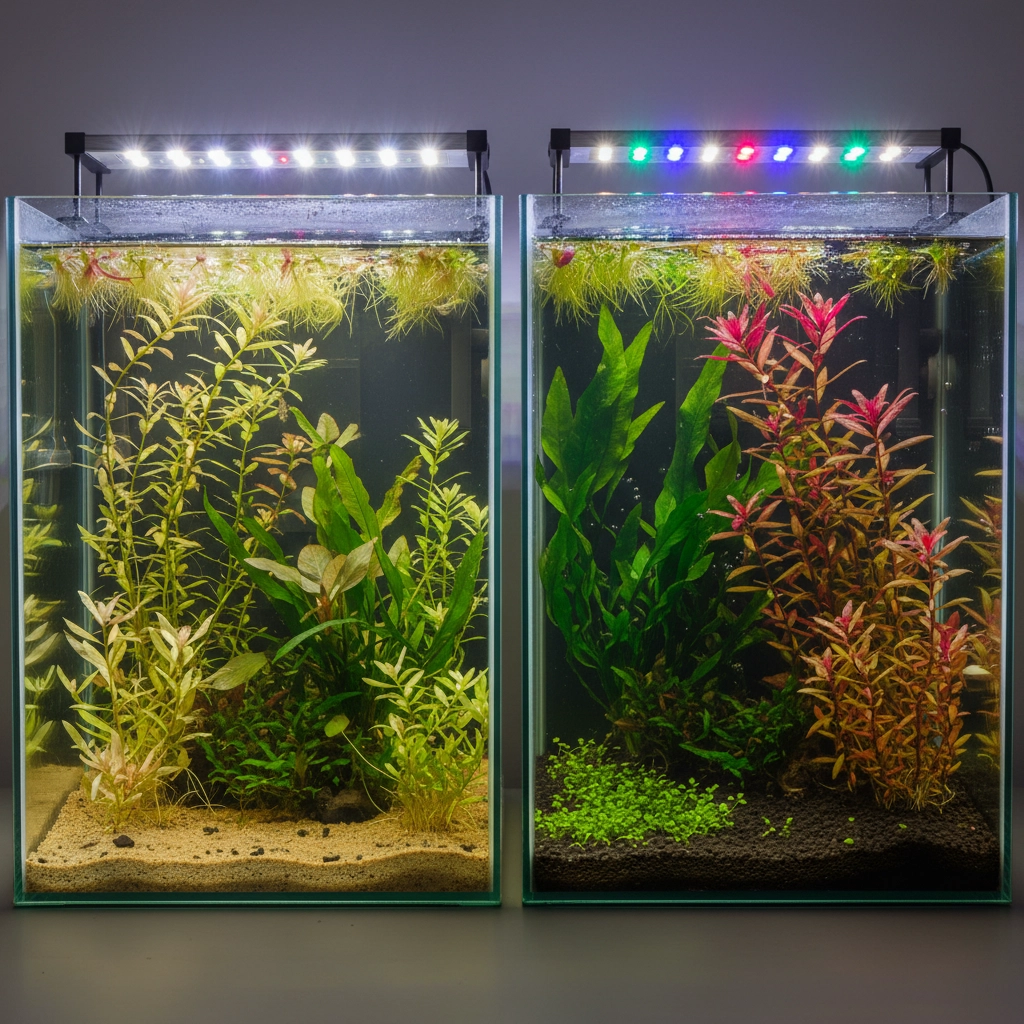
Mistake #4: Starving Your Tank with Inadequate Intensity
The Intensity Imbalance
Insufficient light intensity is like feeding your fish half-rations: they'll survive, but they won't thrive. Weak lighting prevents proper photosynthesis, resulting in pale, lackluster plants and poorly colored corals. On the flip side, excessive intensity can bleach corals and promote aggressive algae growth that quickly overtakes your carefully crafted aquascape.
Finding Your Sweet Spot
Match your lighting intensity to your tank's specific inhabitants. For planted tanks, start with moderate intensity and monitor plant response: healthy growth and vibrant colors indicate you're in the right zone. Reef keepers should invest in a PAR meter to measure light levels precisely. SPS corals typically thrive with PAR levels between 200-350, while softies prefer lower intensities. Remember, modern LEDs can easily exceed these requirements, so measurement isn't optional: it's essential for coral health.
Mistake #5: Creating Shadow Zones with Poor Placement
The Positioning Problem
Incorrect LED placement creates frustrating dead zones where plants struggle and corals fade. When decorations, substrate, or dense vegetation blocks light penetration, you're essentially creating underwater deserts in your aquatic paradise. These shadowed areas become breeding grounds for problems and prevent your tank from reaching its full potential.
Strategic Placement for Success
Position your LEDs to maximize coverage across your entire aquascape. Mount fixtures high enough to prevent shadowing from tall decorations, and consider multiple light sources for larger tanks. If you're dealing with a deep aquarium, ensure your LEDs have sufficient power to penetrate to the substrate level. Strategic placement of reflective surfaces can help distribute light more evenly, eliminating those problematic dark corners that limit your tank's overall success.
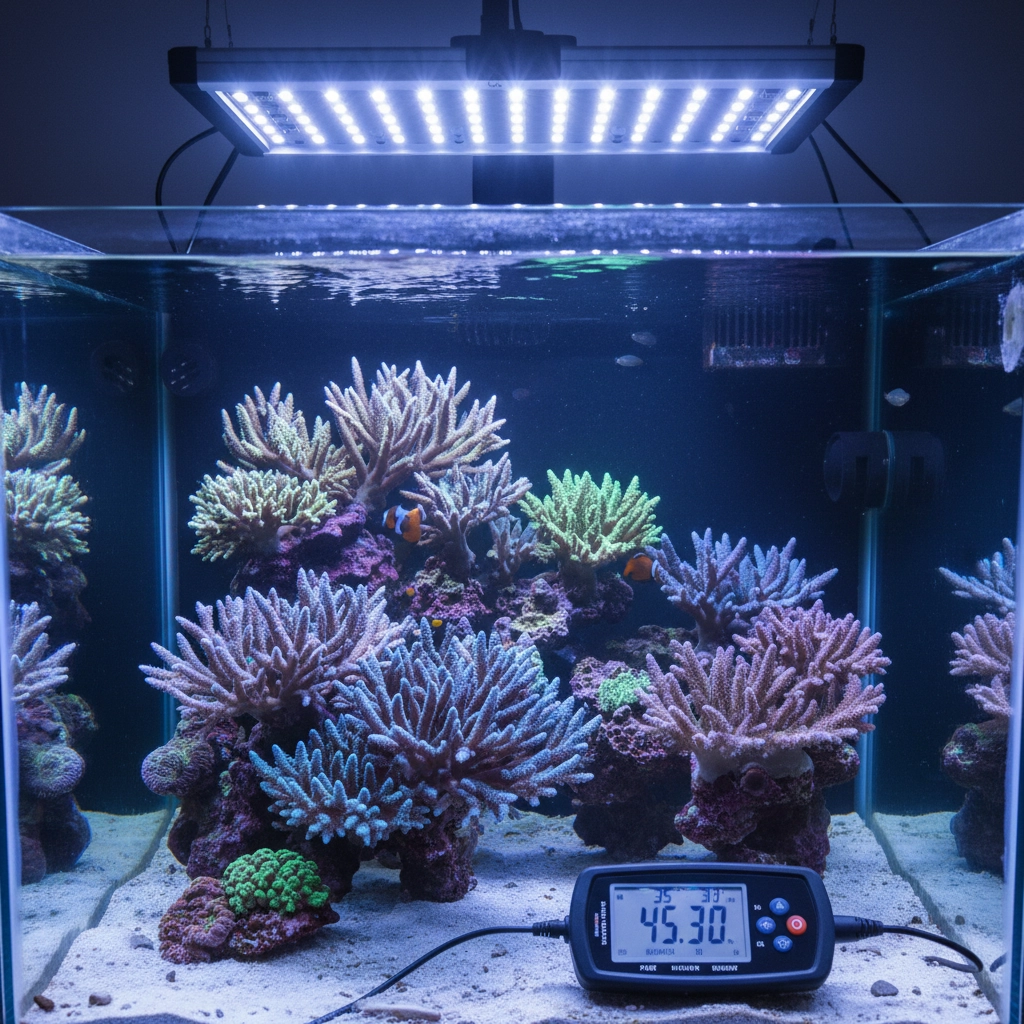
Mistake #6: Constantly Fiddling with Your Settings
The Adjustment Addiction
Modern LED controllers offer incredible customization options, but constantly tweaking intensity, spectrum, and timing is counterproductive. Your corals and plants need stability to acclimate and establish growth patterns. When you're constantly adjusting parameters, you force your aquatic community into perpetual adaptation mode instead of allowing them to flourish in stable conditions.
Stability Breeds Success
Set up your lighting parameters thoughtfully, then resist the urge to constantly tinker. Research optimal settings for your specific setup, configure your controller appropriately, and give your system time to mature. Stability matters more than perfection: your aquatic life will reward patience with steady, impressive growth. Only make gradual adjustments when you observe genuine problems, not because you found a new setting to try.
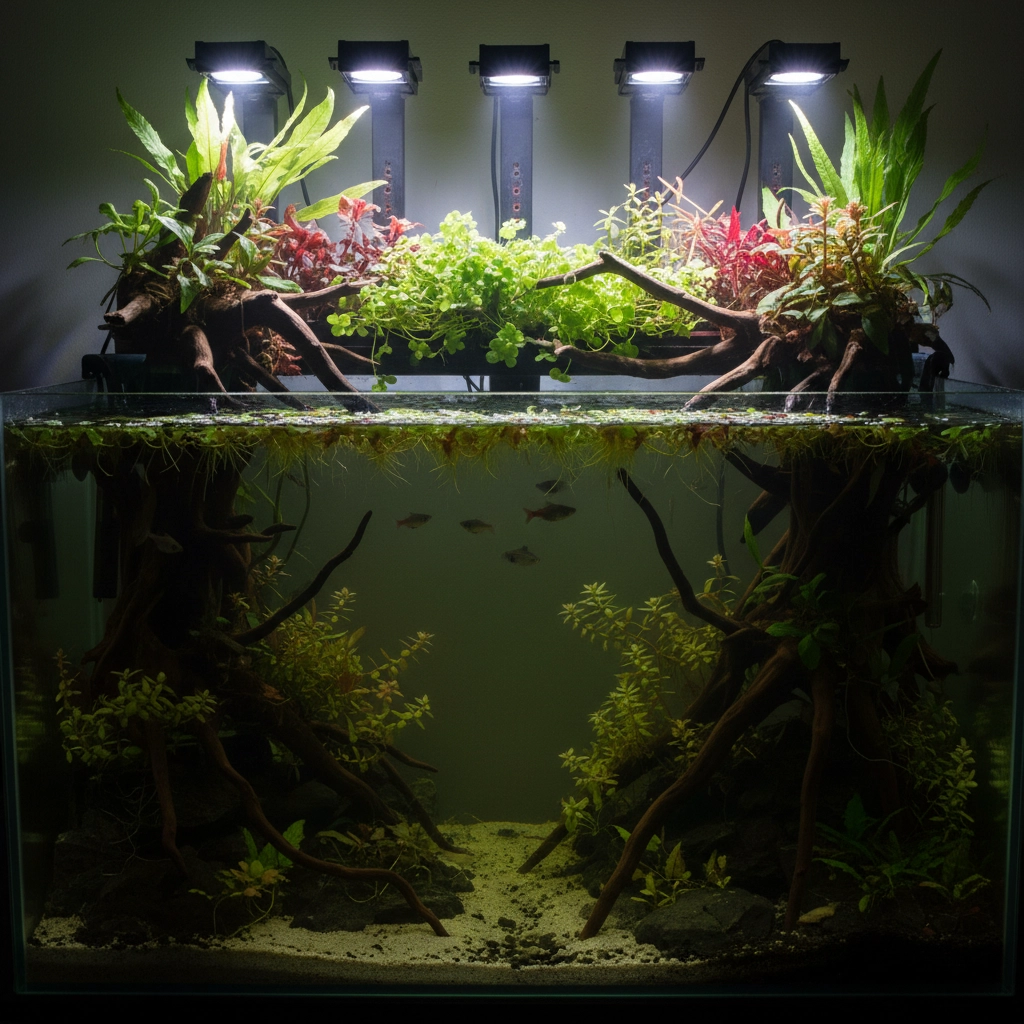
Mistake #7: Ignoring the Aging Process
The Degradation Dilemma
Even the most advanced LED fixtures gradually lose intensity over time, though the decline is often so gradual you won't notice until growth problems emerge. Using aging bulbs means your plants and corals aren't receiving adequate light levels, even though everything appears to be functioning normally. This slow degradation sabotages your long-term success without obvious warning signs.
Maintenance for Lasting Success
Replace traditional aquarium bulbs every 6-12 months, depending on type and usage. LED fixtures typically last 2+ years but should still be monitored for performance decline. Keep maintenance records to track bulb age and replacement schedules. Additionally, invest in quality fixtures from reputable manufacturers: cheap, no-name LEDs often fail prematurely and lack consistent spectral output throughout their lifespan.
Your Path to Lighting Mastery
Mastering LED aquarium lighting isn't about having the most expensive equipment: it's about understanding your aquatic community's needs and providing consistent, appropriate illumination. These seven mistakes are easily preventable with proper planning and patience. Your journey toward that captivating underwater masterpiece becomes much smoother when you avoid these common pitfalls.
Remember, every successful aquarist has made lighting mistakes along the way. The key is learning from these experiences and applying that knowledge to create an aquatic environment where your plants flourish and corals display their most vibrant colors. With proper LED lighting techniques, you're well on your way to achieving that dynamic, thriving aquarium you've always envisioned.
Ready to dive deeper into your aquarium journey? Follow us on social media for daily tips, stunning tank showcases, and expert advice that'll keep your aquatic passion thriving! Have questions about your lighting setup or want to share photos of your underwater masterpiece? We'd love to hear from you: your tank might just be featured in our vibrant community showcase. Let's create something extraordinary together!
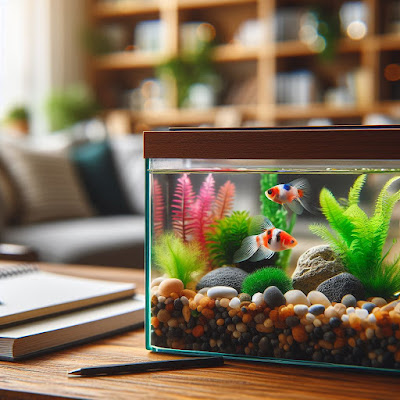






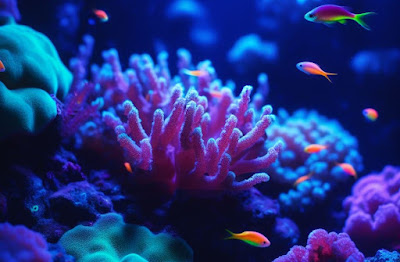
.png)
